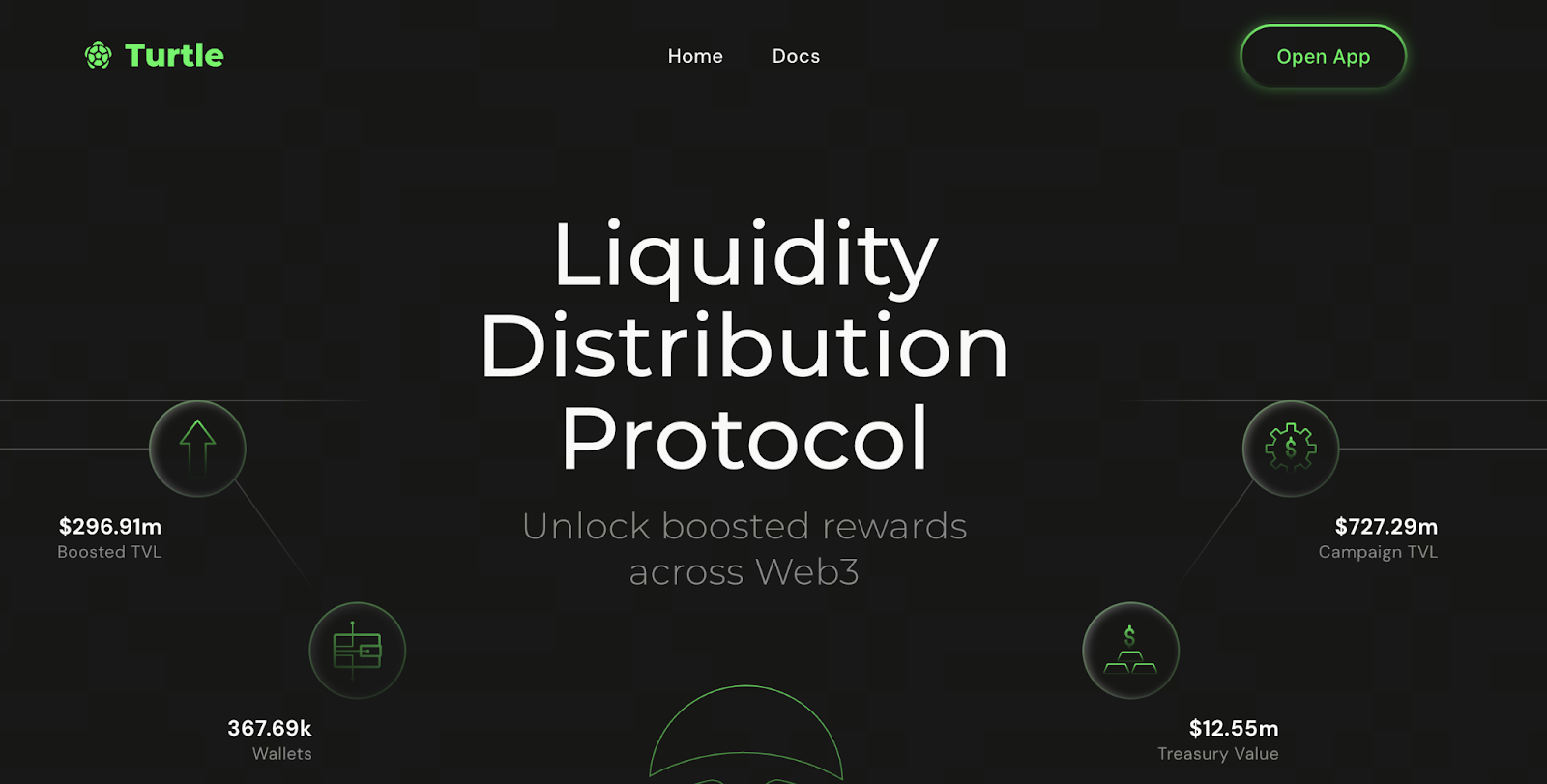How Turtle Protocol Is Revolutionizing Web3 Liquidity

Image: https://www.turtle.xyz/
In the Web3 ecosystem, liquidity often determines the success or failure of many protocols. Today, we’ll explore the Turtle Protocol—a novel infrastructure designed specifically for liquidity distribution. It’s an excellent entry point for newcomers and offers a practical framework for those eager to get involved quickly.
What Is the Turtle Protocol?
Turtle Protocol is a decentralized liquidity distribution protocol with the mission to “connect capital and protocols, making liquidity programmable, verifiable, and scalable through a transparent, data-driven coordination layer.” As outlined in its official documentation, Turtle provides APIs, SDKs, an Earn Widget, and a Leaderboard, enabling protocols, liquidity providers (LPs), and users to interact seamlessly within a unified system.
To put it simply, while traditional DeFi protocols offer liquidity pools for users to deposit or withdraw assets, Turtle advances the conversation by focusing on how liquidity is allocated, how capital is deployed more efficiently, and how user participation is incentivized.
Key Features of Turtle Protocol
- Curated Opportunities: Turtle curates and drives Boosted Deals and ecosystem campaigns (such as Linea Ignition and Avalanche) to help networks launch and bootstrap liquidity.
- Consolidated Liquidity: Through products like Turtle Vaults, Turtle aggregates capital, solving the fragmentation challenges common in traditional liquidity models.
- Distribution Layer: Turtle builds a coordination layer that delivers more aligned, transparent, and efficient incentives between protocols and LPs.
Latest Developments: Funding and Exchange Listings
Recently, Turtle Protocol announced two major developments:
- It has secured an additional $5.5 million in funding, raising its total capital to $11.7 million, dedicated to expanding its Liquidity Distribution Network.
- Turtle also announced an upcoming listing on major exchange KuCoin, scheduled for October 22, 2025.
These milestones have significantly raised Turtle’s profile in the DeFi infrastructure space. The funding underscores robust financial backing and industry trust, while the exchange listing signals that TURTLE token liquidity may increase and barriers to participation could decrease further.
How to Get Started as a Beginner?
If you’re new to DeFi and Turtle Protocol, consider these steps:
- Begin by visiting Turtle’s official documentation to understand its product offerings, including the Earn API, Vaults, and Leaderboard.
- Track upcoming exchange listing announcements, such as those for KuCoin, to stay informed about TURTLE token launch dates and trading pairs.
- Once you’ve confirmed supported wallets and chains (like BNB Chain and Linea), consider joining Boosted Deals or ecosystem campaigns.
- Practice prudent fund management: only invest what you can afford to lose, diversify your risk, and avoid concentrating all assets in a single project.
Risk Advisory and Conclusion
While Turtle Protocol shows considerable promise, beginners should remain aware of these risks:
- Despite recent funding and upcoming major exchange listings, the TURTLE token price and market cap are still unestablished, presenting uncertainty.
- Participation in Boosted Deals or liquidity incentives involves smart contract risk, on-chain technical risk, and market volatility.
- The space is highly competitive, with many emerging projects focused on liquidity intermediaries or distribution layers, so Turtle’s edge will depend on continued innovation and execution.
In summary, Turtle Protocol exemplifies a new direction in DeFi—integrating fragmented liquidity and efficiently distributing it through a robust coordination layer. For newcomers, it’s a compelling area to watch. With a clear understanding of its mechanisms and cautious investment, you can better seize opportunities within Web3’s evolving infrastructure.
Related Articles

Pi Coin Transaction Guide: How to Transfer to Gate.io

What is N2: An AI-Driven Layer 2 Solution

Flare Crypto Explained: What Is Flare Network and Why It Matters in 2025

How to Use a Crypto Whale Tracker: Top Tool Recommendation for 2025 to Follow Whale Moves

Understand Baby doge coin in one article
